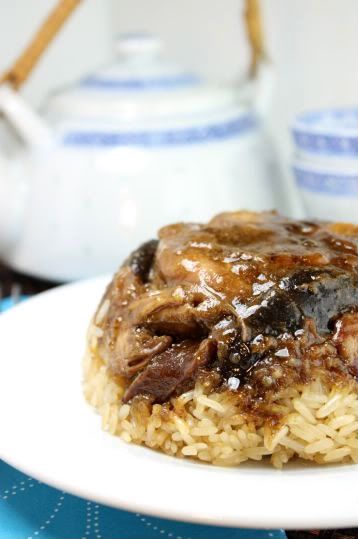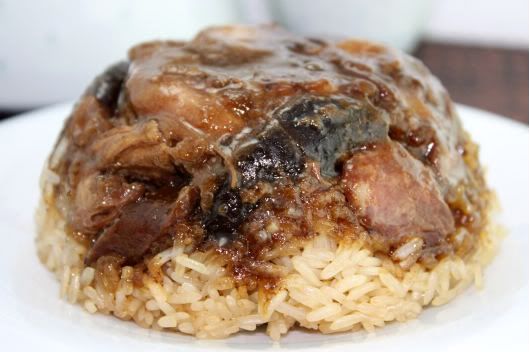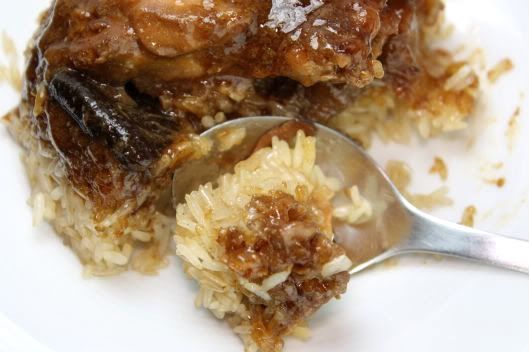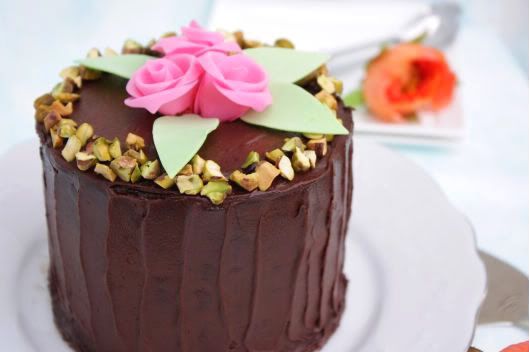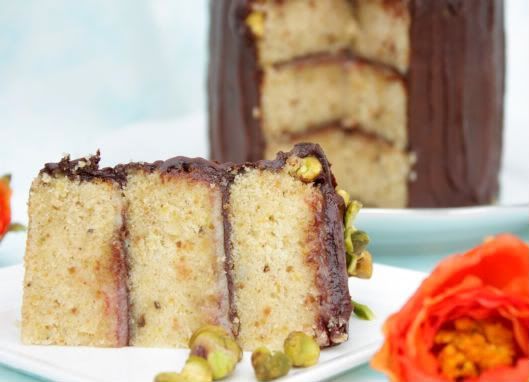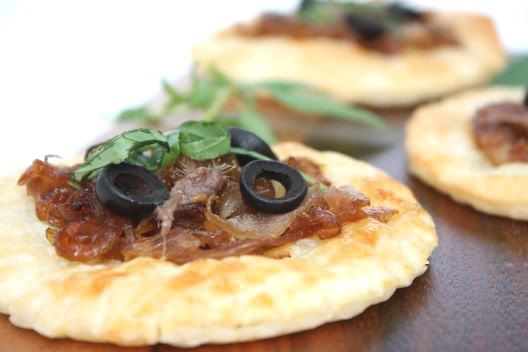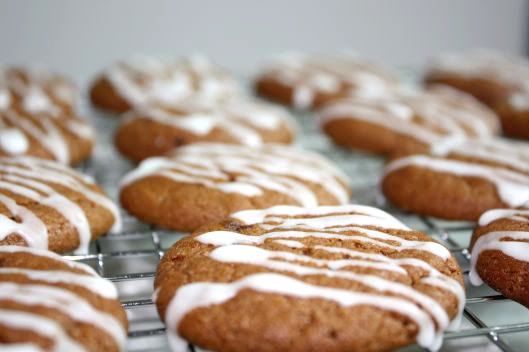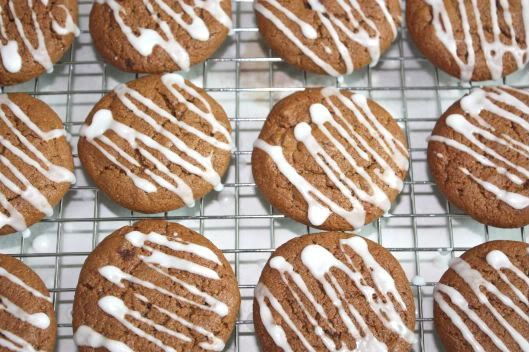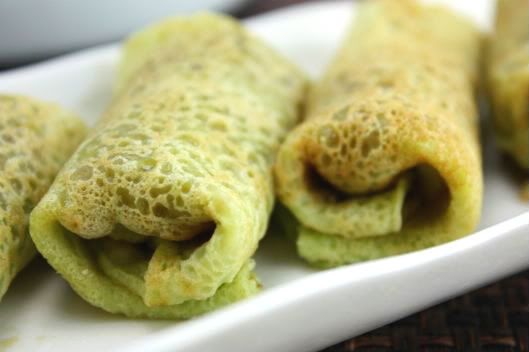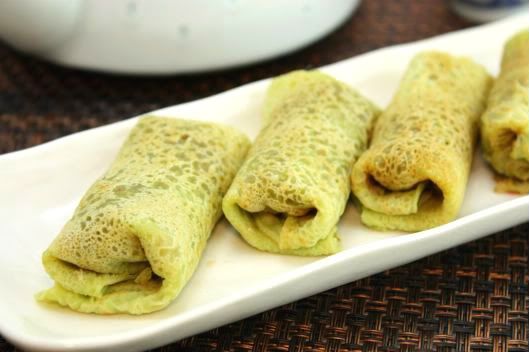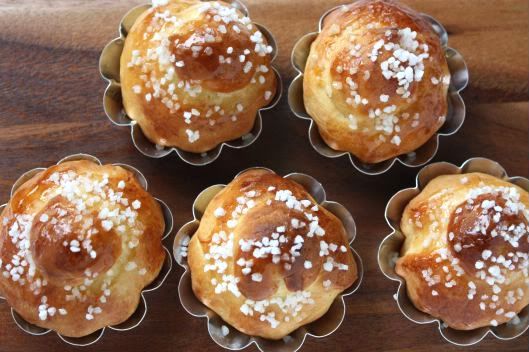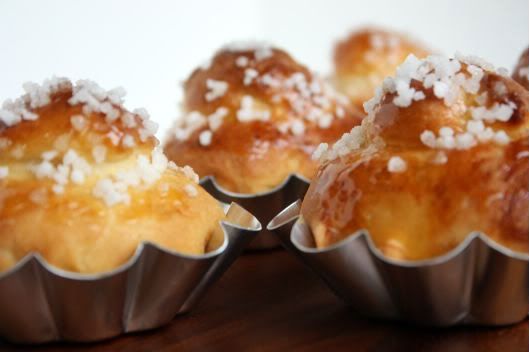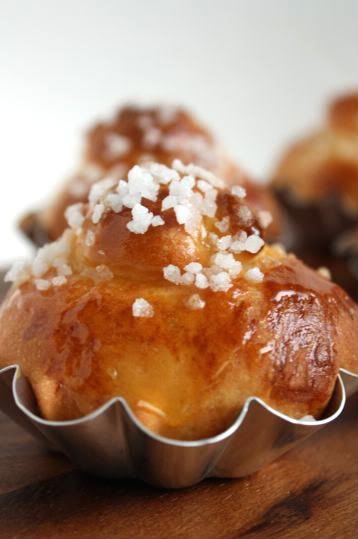
I've made rough puff pastry from scratch before which is simpler as compared with classic puff but not something I'd bother about if I really don't have the time. So store bought puff would be what I would reach for whilst doing my grocery shopping. I decided to try out one the recipes which uses salmon enwrapped in puff. I put this together for our Sunday dinner with a side of mixed salad in balsamic vinegar. We thoroughly enjoyed it and it's definitely going on my entertainment menu. But next time round, I'd probably make this into individual servings as it will be much easier to serve, no cutting and will look more elegant.
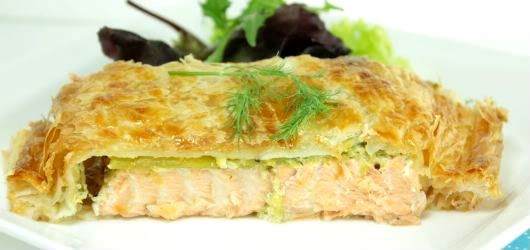
Salmon En Croute
Recipe from Laura Calder "French Food at Home"
Yield: 6
Ingredients:
1 x salmon filet, about 1-1/2 pounds/750 g
1 lb. asparagus, trimmed
1/4 cup crème fraîche
3 to 4 tablespoons chopped fresh dill
Zest of 1 lemon
1 lb. sheet puff pastry (2 sheets)
Salt and pepper
Glaze: 1 egg, lightly beaten
Method:
1) Skin and bone the salmon and set aside. Heat the oven to 450°F\230°C.
2) Cut the tips off the asparagus, and poach in boiling salted water until tender, 3 to 5 minutes. Drain well, refresh in ice-cold water, then drain again, leaving to sit so that all the water comes off. Purée and stir through the cream, dill, and lemon zest, to blend. Season with salt and pepper and set aside.
3) Lay the puff on a damp baking sheet with the long edge facing you. Lay the salmon on the pastry, like a picture in its frame. Season with salt and pepper. Lay the raw stems of asparagus on top of the salmon, like pencils. Spread the purée mixture over top.
4) Brush the margins with the egg wash. Lay the top pastry over the salmon and press the edges to seal, like a giant ravioli. Trim the edges, leaving a 1-inch/2.5 cm border. Press with the tines of a fork, then, with the dull edge of a knife, scallop the edges. Make two or three slits in the top to allow steam to escape. Brush all over with the egg-wash glaze and bake until puffed up and golden brown, about 20 minutes.
5) Remove from the oven and let cool five minutes before slicing to serve. This dish is also good at room temperature.






